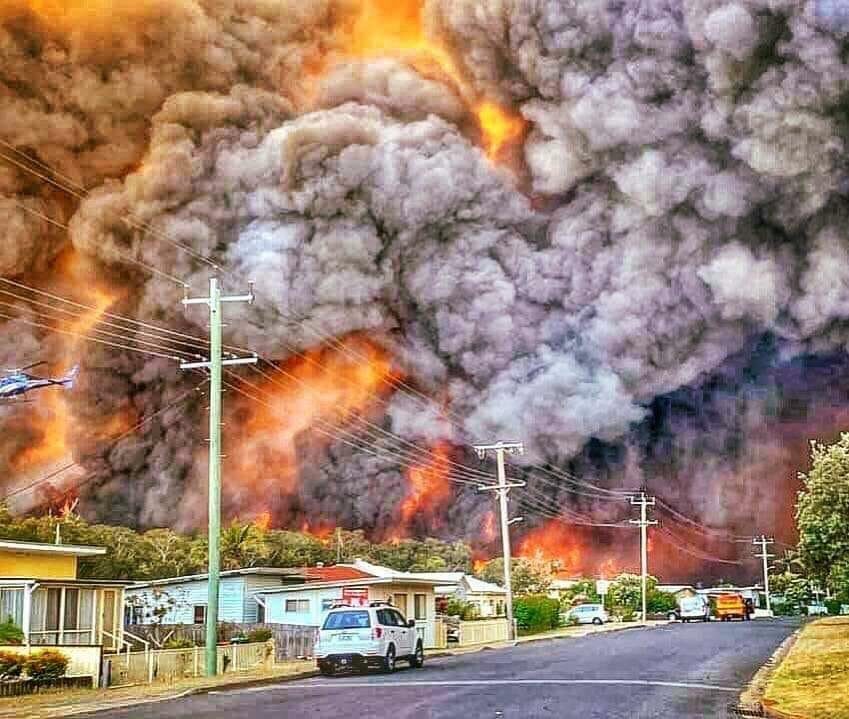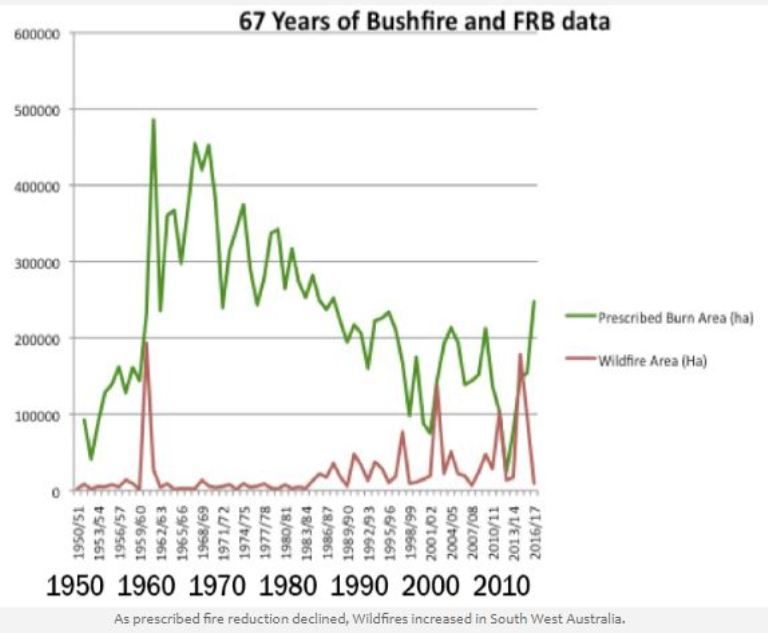Melissa Price succumbs to pagan witchcraft:
"There's no doubt that there's many people who have suffered over this summer. We talk about the Victorian bushfires; (in) my home state of Western Australia we've also got fires there," [Melissa Price] told Sky News this morning. "There's no doubt that climate change is having an impact on us. There's no denying that."Let's look at her home state. After 67 years of fire management in the giant, hot, dry state of WA, the trend is clear — the more prescribed area we burn, the less wildfire does. In the graph below the prescribed burns declined for forty years and wildfires increased for thirty. After the Dwellingup Fire in 1961 the state ramped up the preventative burns, and reduced wildfires.
As the BushFireFront team say:
"We can't control the weather but we can control the fuel loads"
Tough call — what do we do, redesign our energy system, pay billions, change our cars, our houses and our light globes in the hope that bush fires will be nicer, or do we just go back to doing what we used to do that worked?
Thanks to Roger Underwood and the BFF team who told us how to prevent megafires in April 2009, fully ten years ago.
Avoiding Megafires in Australia
Large wildfires can only occur when there is a combination, at the same time, of three things:
- an ignition source,
- severe fire weather and,
- a large contiguous accumulation of fuel.
We obviously can't control the weather, nor can we hope to eliminate all possible avenues of ignition. The only factor we can control is the large contiguous accumulations of fuel. Therefore, broadscale fuel reduction burning is the only defence we have against large wildfires. This will not prevent fires occurring, but it will ensure fires are less intense, are easier and safer to control and will do less damage.
Does it work? Yes it does, as has been shown many times, over many years, by the experience of Western Australian forest managers. The "proof of the pudding" is the incidence of large wildfires in Western Australian forests over the last 50 years.
Or we could put up some windmills and solar panels to "stop the flames".





Sound logic.